 Fall tactics work for spring specks
Fall tactics work for spring specks
As a cold-blooded species, speckled trout get cranked up under springtime conditions.
Any small fish or shrimp perusing the inshore lairs are subject to a truncated lifespan when a fleet of hungry speckled trout awake from their winter slumber.
Speckled trout prefer cool — not cold — water temperatures. And the rise in springtime water temps can make the spring months hot and heavy for speck anglers in Carolina waters.
The change of seasons gets outdoorsmen a little excited, especially during the seasonal transition from the freezing winter to spring. Anglers can surely relate to a much-anticipated temperature change on and off the water. And speckled trout are in the same frame of mind.
The spring fishing season can closely mimic the fall frolic with respect to tactics and techniques, but with a few notable differences that anglers can easily overcome.
Speckled trout are a little more complex than other fish species when it comes to migration patterns. Some speckled trout migrate hundreds of miles each year traveling along the eastern seaboard heading to warmer or cooler climates. But although they are the exact same species, many other speckled trout never leave state waters. Or at least they don’t appear to anyway. Scientists that spend many hours and years on these fish still lack a complete life history as it relates to local and large-scale migration patterns.
Speckled trout anglers are fortunate that all trout don’t migrate into or away from their home fishing waters the same way each year. That leaves a substantial pool of fish to cast to on a free day off work. And for anglers with a boat and a box of lures, they can experience fall-like action during the spring season.
 Shallow flats are key areas
Shallow flats are key areas
Guide Jason Dail of Silver Spoon Charters and Stillwater Rods out of Wilmington, N.C. is an avid inshore guide, rod builder, and professional angler with a passion for redfish and speckled trout fishing. For Dail, the spring trout season is just as rewarding as the fall bite with quite a few similarities in techniques and tactics.
“We have a substantial resident population of trout that will overwinter in our waters in both highly tidal and areas with less tidal amplitude,” said Dail (910-540-0319). “North Carolina’s coastal waters are quite unique with much of the state’s inshore grounds lacking much tidal influence as compared to other coastal regions along the east coast. But the fish will typically respond similarly to rises in water temperature in the springtime.”
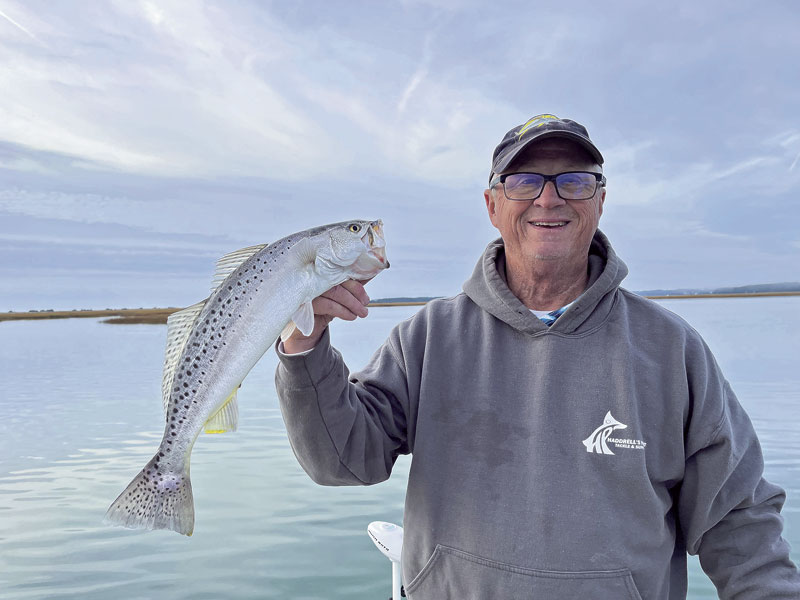 Per square mile, North Carolina contains a higher portion of low tidal waters and they are contained mostly in the waters associated with the Albemarle and Pamlico Sounds. But as Dail said, these waters will fish similarly as water temperatures rise under spring conditions and bait becomes available.
Per square mile, North Carolina contains a higher portion of low tidal waters and they are contained mostly in the waters associated with the Albemarle and Pamlico Sounds. But as Dail said, these waters will fish similarly as water temperatures rise under spring conditions and bait becomes available.
In the spring, availability of forage species for trout and other inshore species is limited to small fish such as mud minnows, sand perch, menhaden, and some scattered mullet. In more tidal areas closer to the ocean, a run of glass minnows and a few other forage species can be available for trout in spring. But trout continue to feed in ambush style that is similar to the fall season or any other time of year.
For Dail, his springtime fishing tactics are also similar to his autumn techniques by targeting fish at ambush positions along eddies and structure. However, the trout will be found within springtime locations.
Look for aggressive bites
“Trout overwinter up the creeks and in places with deep water refuges when the water is cold. As the water warms in spring, they come out of creeks to the flats in the creeks and as the water warms more, they will move into the main portion of the river along shallow flats,” he said.
The springtime weather can be shifty with warm days in the 70s and then back to near freezing temps in the same week. Trout are accustomed to this type of spring weather and will typically stay close to their winter holding areas with deep water. But the shallow flats with structure can produce excellent fishing opportunities during warm spells in the spring months.
“The fish are less lethargic in spring and they will have a good appetite after being relatively dormant all winter long. And with less bait available in spring as the summer and fall, trout will be aggressively feeding on any available bait that passes by,” he said. “Mummichog, sand perch, and some small menhaden and finger mullet are possible this time of year.”
 Topwater can be effective
Topwater can be effective
An early arrival of white shrimp into the estuaries is possible. But shrimp typically don’t migrate inland in true numbers until late spring. As a result, baitfish mimics are typically the best match-the-hatch imitations to use.
“I am throwing mostly MirrOlure 17MR and 18MR, Betts Halo Shad, and 4- to 6-inch Saltwater Assassin Sea Shads,” Dail said.
The spring fishing season wouldn’t be the same without a little surface action either. The topwater bite can be exceptional in the springtime.
“If the water warms up quickly in April and we have 55-degree water or better, topwater plugs such as Spook Jr.’s are effective. Those flats along the insides of creeks or in the main part of the rivers are excellent places to throw and get hooked up,” he said.
The spring shift to warmer temperatures creates excitement for anglers and for their prized catches lurking within inshore estuaries of the Carolinas. Take fall tactics and deploy them under the spring conditions to see why trout anglers get so excited during spring.
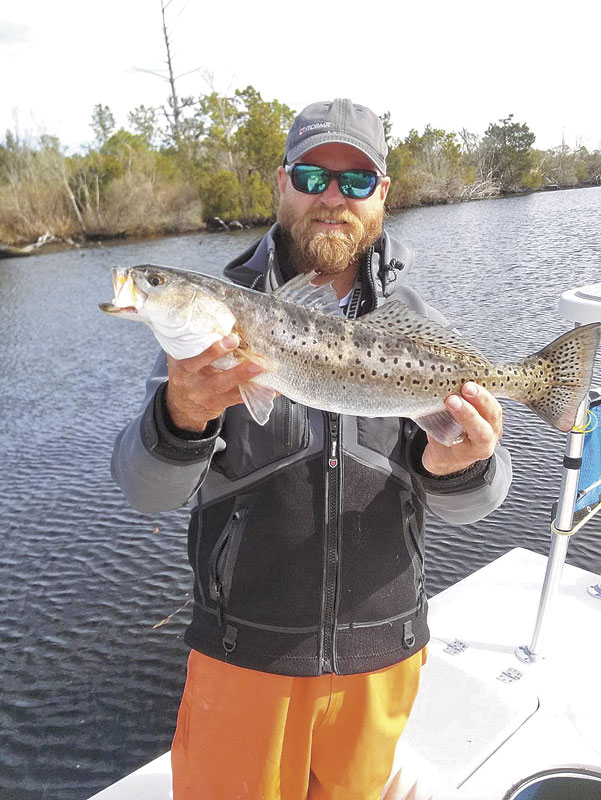
ICW banks are speckled trout hotspots
Carolina anglers have thousands of acres of flooded jungles to target their speckled favorites. But one of the commonly overlooked places to catch trout is along the banks of the ICW. That’s especially true for speckled trout in the springtime.
In certain parts of the Carolinas, trout will overwinter in the waterway and then feed along the banks during warm days in the spring. These ledges lined with grass, oysters, and other structures are excellent spring locales to find trout acclimating to the spring transition.
The ICW typically ranges from 15-25 feet deep throughout its range in the Carolinas. And much of it contains shallow shelves with a substantial amount of submerged structure along its banks. Trout can remain in the deep water on cold days and transition onto the shallow shelves when it warms up. And the bait will follow a similar pattern.
Most of the ICW contains docks, seawalls, and then natural wood and Spartina along its shores. Anywhere from the immediate shelf to the margin can have fish in an ambush position ready to commit.
Even in places where excellent spring trout habitat is abundant, the shallow shelves adjacent to the ICW should never be avoided, especially in the springtime.

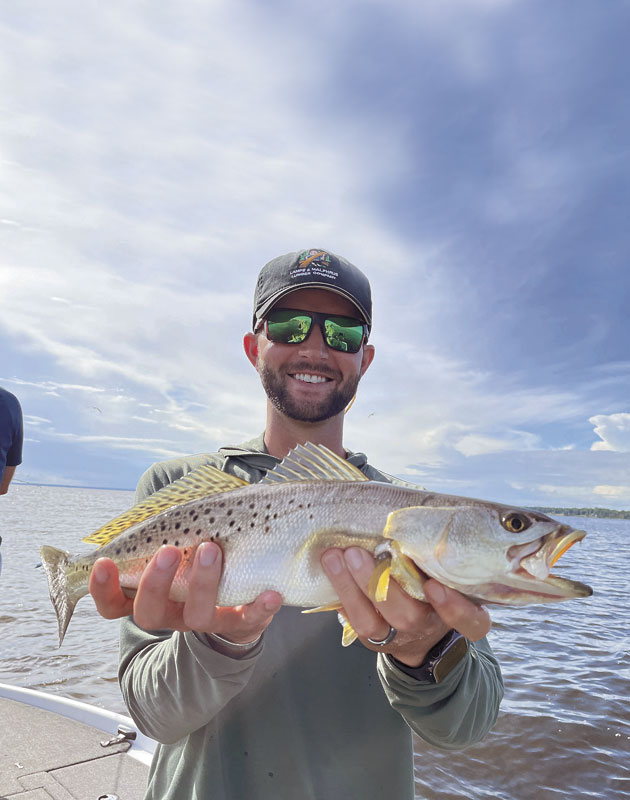
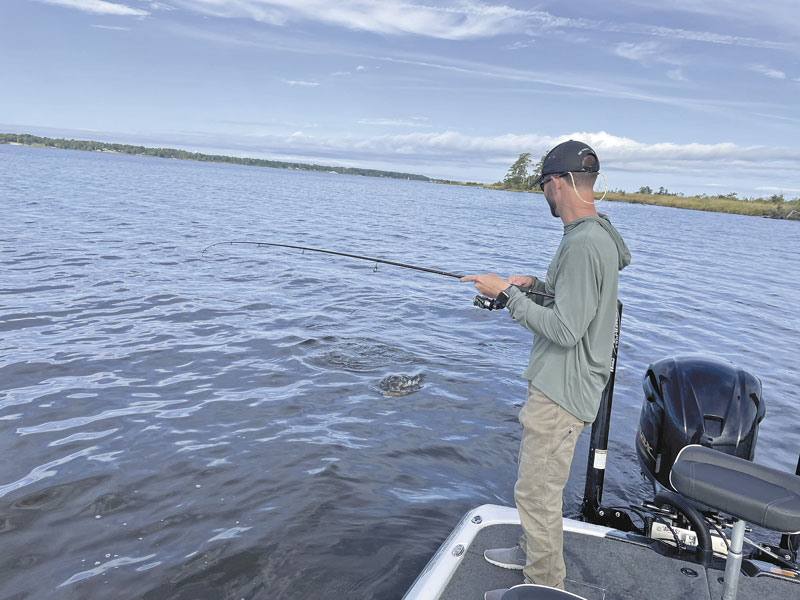
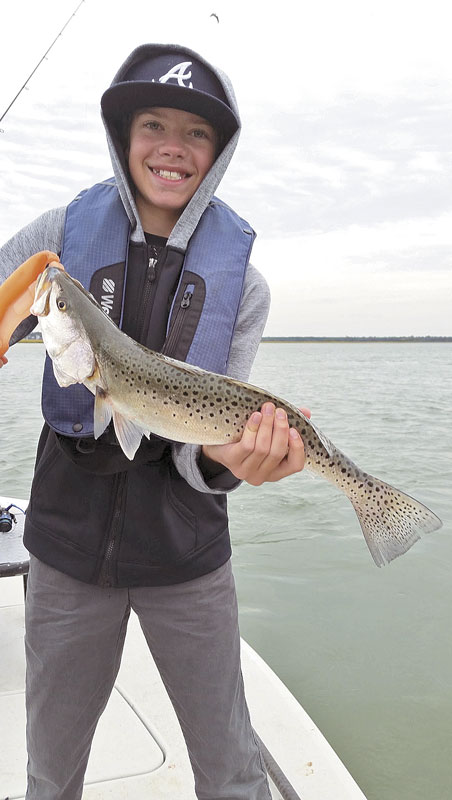

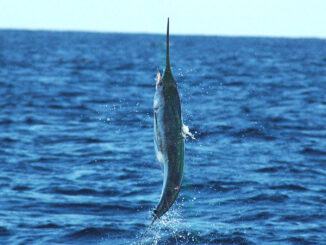


Be the first to comment